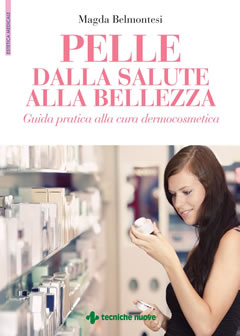Area riservata
Sezioni di pelle

Pelle dalla salute alla bellezza. Guida pratica alla cura dermocosmetica.
Ora disponibilie su: Amazon
Links
Dott.ssa Maria Gabriella di Russo
Medico Chirurgo
Specialista in Idrologia Medica
www.mariagabrielladirusso.it
Medico Chirurgo
Specialista in Idrologia Medica
www.mariagabrielladirusso.it

Novità, anticipazione, notizie dal mondo dei filler e dei più innovativi trattamenti estetici....
Per saperne di più - Il mondo di Restylane
Hyaluronic: a filler for beauty

It is called hyaluronic acid and represents one of the latest finds of the modern cosmetic research as concerns aesthetic and anti-aging treatments. Naturally present and chemically identical in every species of animal, this substance (belonging, more precisely, to the group of polysaccharides) is extremely important both for the maintenance of the skin moisture and for the deep hydration of the cells forming the derma, i.e. the deepest skin layer. Hyaluronic acid has been used for over twenty years in many fields of general medicine: for example, oculistics or orthopedics are some of the branches where it has shown to be useful thanks to its high biocompatibility that prevents it from originating allergical or inflammatory phenomena. HYALURONIC ACID: HOW AND WHY In the aesthetic field the hyaluronic acid is used in different ways. Because of its capability of giving tissues firmness, turgor and moisture, it is used as “filler”, that means as a reabsorbable substance to be injected into the derma; its main function is the “filling” of wrinkles, folds, furrows, lips, cheek bones, chin. Used as “biostimulant”, it is injected in order to firm the texture and to restore the compactness of the facial skin. Being a biocompatible substance normally produced by our body, hyaluronic acid is slowly reabsorbed by skin. Then, after a certain period of time it is necessary to repeat the treatment. The rapidity of absorption of the hyaluronic acid depends on many factors. First of all on the individual cellular metabolism. In fact, there are people on which the reabsorption of the substance happens slowlier, while other people eliminate it quickly. Further elements are age (the more we are young, the more our skin is rich in natural hyaluronic acid), facial mimics (if muscles are strong stimulated, as on the periocular area or around the lips, the time is shorter), sun, smoke, stress, producing free radicals that consume the substance faster. The treatment is nearly always absolutely painless and only some time requires the use of an anaesthetic cream in case of very sensitive areas, as lips for instance. At the end of the session slight flushing, swelling or aching can frequently occur, but these symptoms disappear within a few hours.















